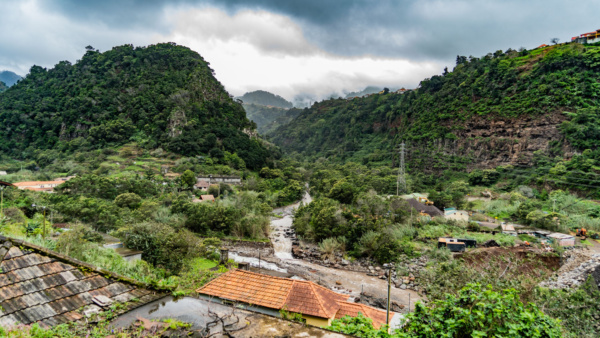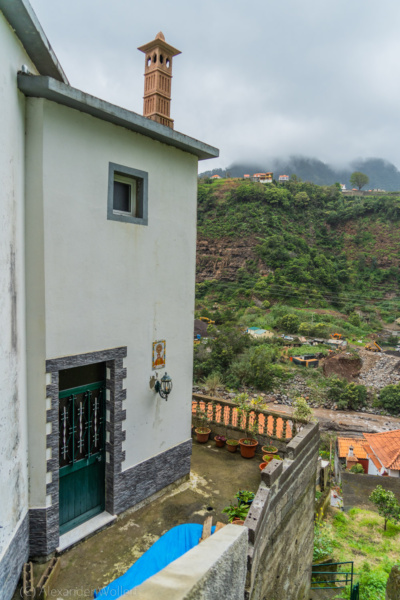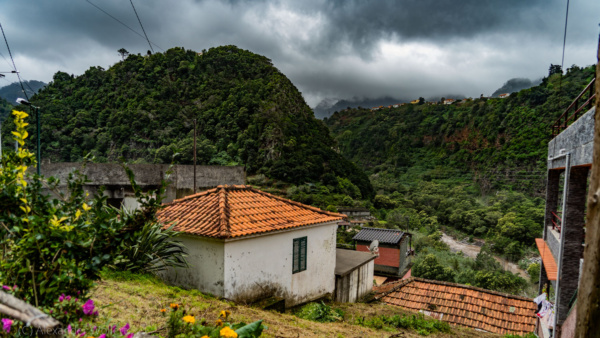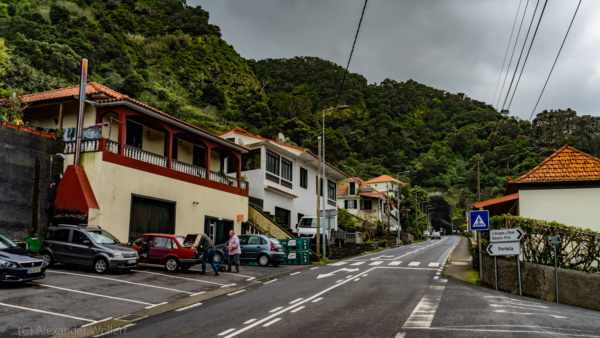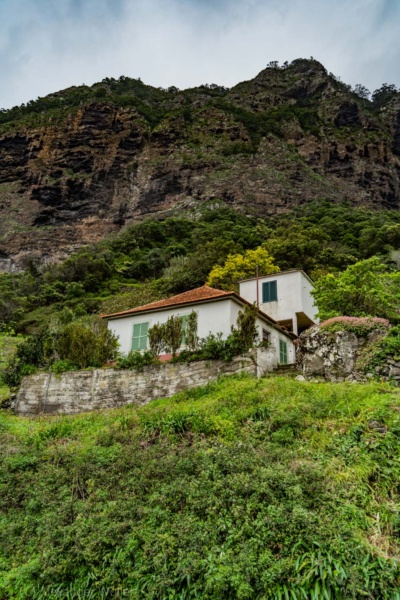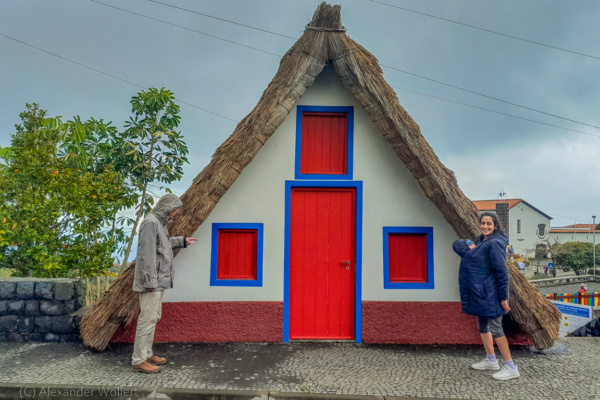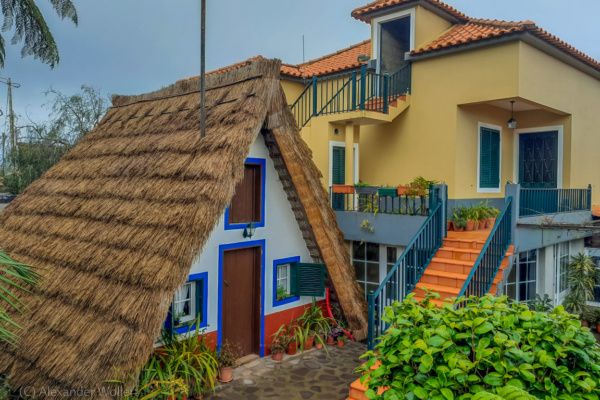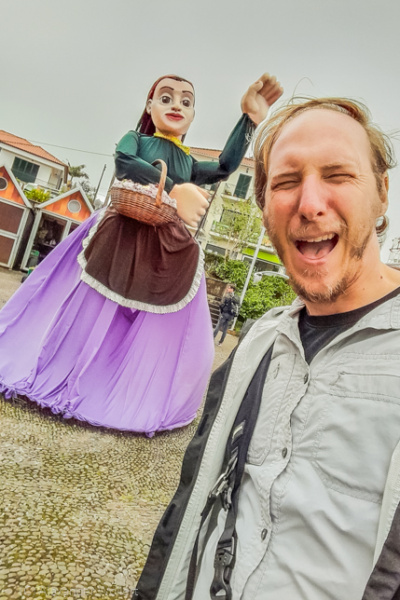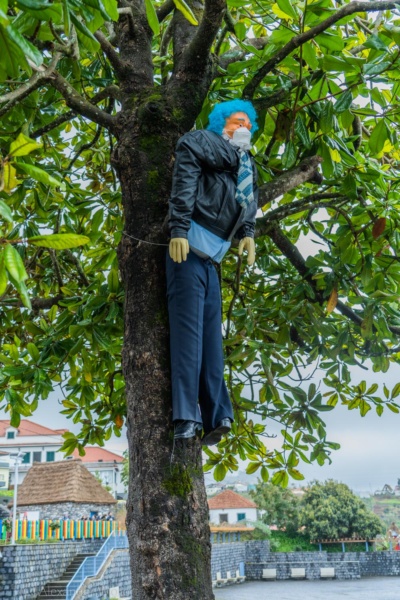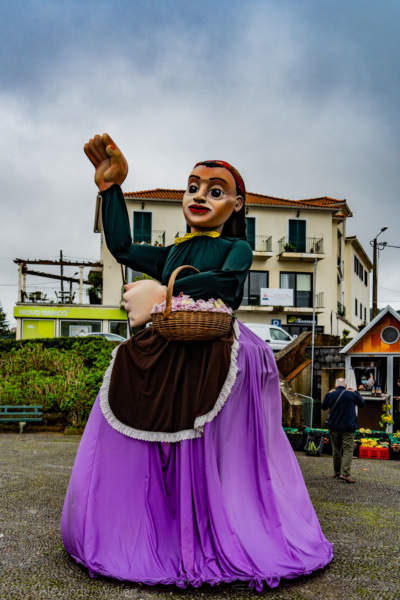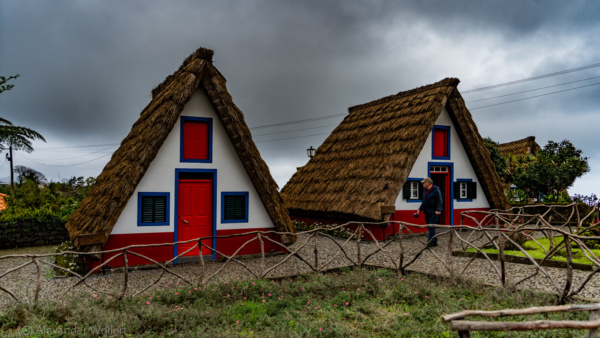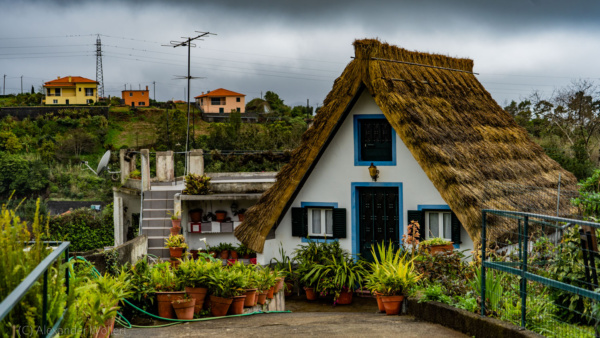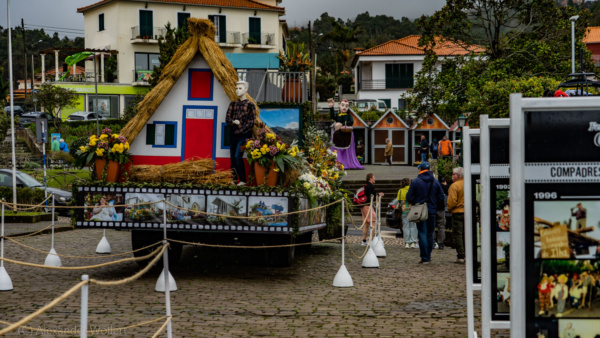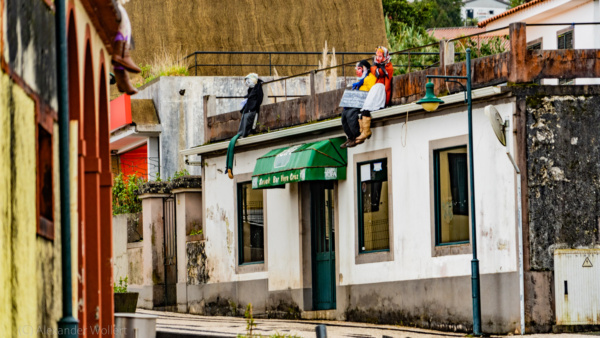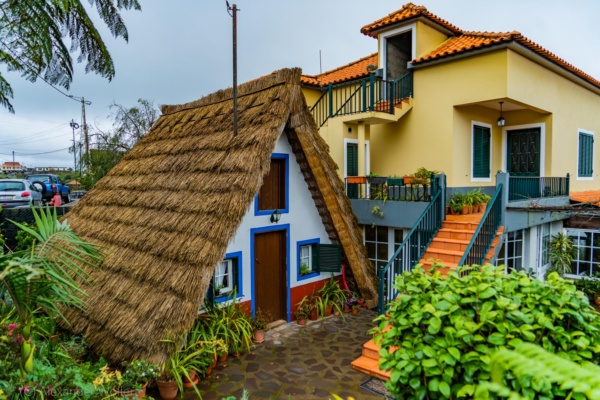Diary Entry
I had already seen photos of these special houses in the travel guide, now we want to see the original. The weather is very changeable.
Leon, Sara and I drive to the other end of the island with my parents. There is also a lot to see on the way and the landscape invites to numerous stops where I just have to take photos! The landscape around the ribeiro frio, the cold river, is particularly breathtaking.
It’s cold and the wind from the sea does the rest that it’s not exactly comfortable outside the car. Also, Leon is in a bad mood. These moments are rarely seen with the happy families you can follow on Instagram on their travels.
We reach Santana and first have to get our bearings. Google sends us to an oversized parking garage, but there is nobody there apart from us. It looks like Jurassic Park before it opened, where the exhibits have already eaten the staff. We look around and actually see a closed park. Or maybe he’s open but no one cares, we don’t know. However, it seems to be about profit optimization based on the little colorful houses we are looking for and to be designed as a theme park.
We resolutely ignore the park entrance and march towards the city. An underpass and a slight incline later, we arrive in the village center, where there is a small farmer’s market, small colorful houses and oversized dolls to marvel at.
It’s mid-March and it’s carnival time. There should be parades in the streets and parties in the inner cities. Exactly the three weeks we are in the country. What a coincidence. And what a letdown. Because it is also the second Corona year and everything that could be fun is cancelled. Portugal is particularly struggling with Covid-19 and is taking strict action.
Nevertheless, as every year, the residents of Santana built their dolls and proudly displayed them in the village square with the floats intended for the parades in Funchal. As if a crowd following the lynch law had raged through the town, one sees human-sized, clothed figures dangling from numerous houses. Sometimes it takes a second look to make sure that people are not alive or dead.
The small, colorful houses are also located in the center of the village. A small plaque explains the rather unspectacular history of the huts, which look like something out of a small Gallic village. These are temporary homes for guest workers who came to the island in the 19th century to help with the harvest. They needed a practical place to stay for people who don’t make demands. The colors came to the houses later because they attracted tourists.
Today you can no longer live in the dwarf houses, but you can buy local products and souvenirs.

